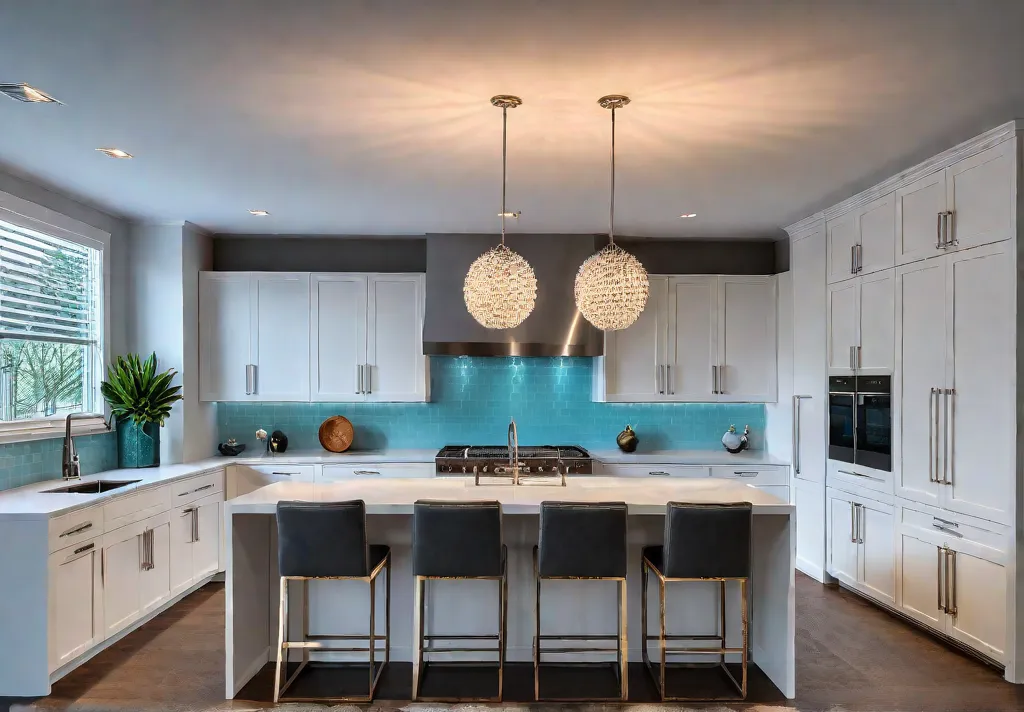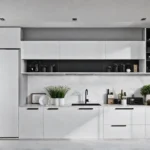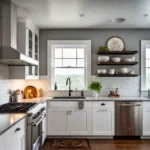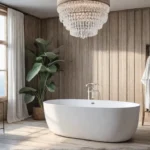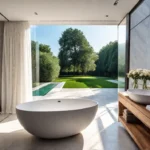Imagine stepping into your dream kitchen – a warm, inviting space that looks stunning and makes cooking and entertaining a true joy. The secret to creating this culinary haven? Lighting. That’s right, the humble light fixture can transform your kitchen from drab to fab, setting the mood and enhancing the overall functionality of the space.
As a home decorator and design blogger, I’ve seen how lighting can take a kitchen from merely functional to captivating. Whether you’re planning a full-scale renovation or want to refresh your current kitchen, understanding the different types of lighting and how to layer them is the key to creating a visually appealing and highly practical space.
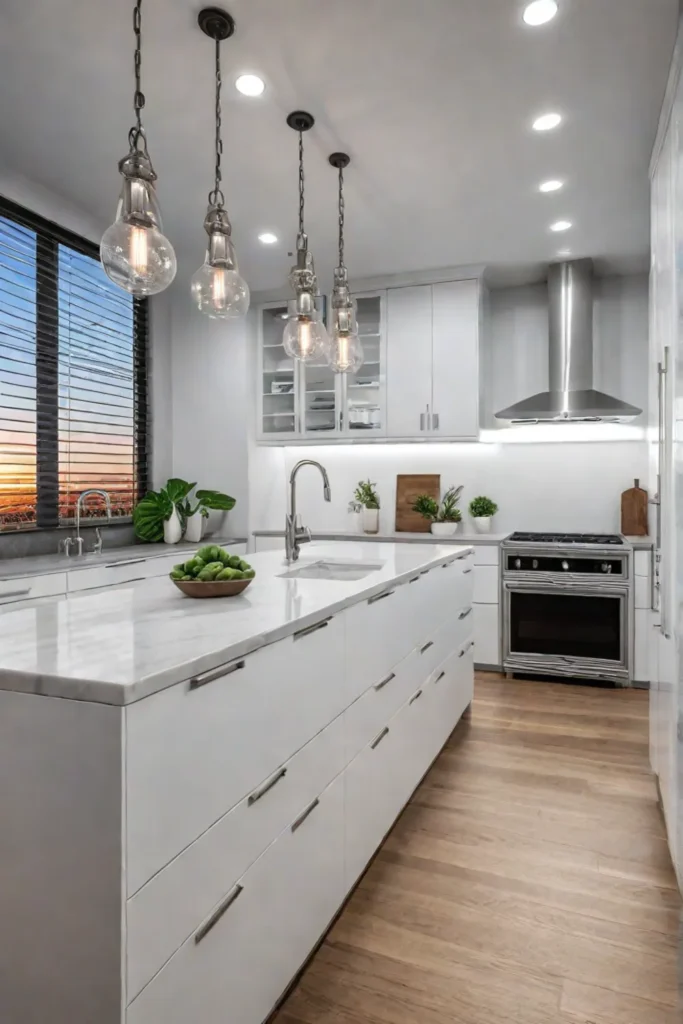
So, get ready to illuminate your culinary dreams and transform your kitchen into the heart of your home. In this article, we’ll explore the various lighting options, uncover the latest trends, and share practical tips to help you create the kitchen of your dreams.
Ambient Lighting
Ambient lighting is the foundation of a well-lit kitchen. The general illumination sets the overall mood and atmosphere, making the space feel warm, inviting, and comfortable. Think of ambient lighting as the natural sunlight that filters through your windows during the day or the soft glow of recessed lights in the evening.
One of the most important aspects of ambient lighting is ensuring even distribution throughout the kitchen. You don’t want dark corners or pockets of shadow – the goal is to create a cohesive, well-lit environment. Recessed lights are a popular choice for ambient lighting, as they can be strategically placed to provide a uniform illumination level.
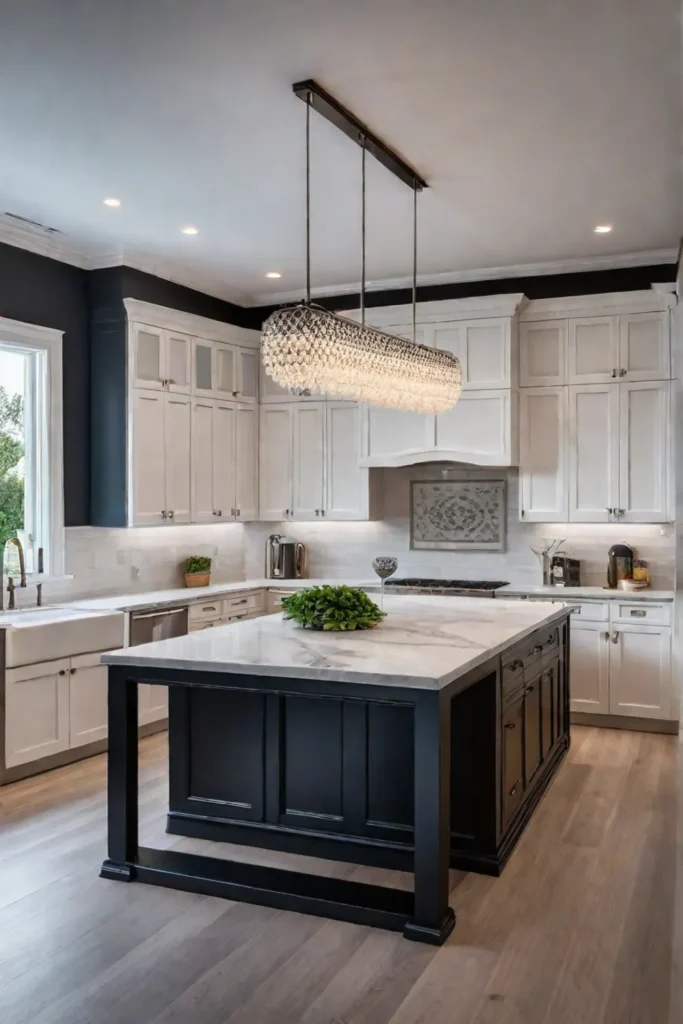
Another option for ambient lighting is pendant lights. These hanging fixtures can add a decorative touch while also contributing to the overall brightness of the room. Pendant lights are often used over kitchen islands or dining areas, helping define different space zones.
Regarding the intensity of ambient lighting, the optimal range is typically between 300-500 lumens per square meter. This brightness level creates a warm, inviting atmosphere without being too harsh or glaring. And if you want to dial in the ambiance, consider dimmable ambient lighting, which allows you to adjust the brightness to suit your mood or the occasion.
Task Lighting
While ambient lighting sets the stage, task lighting is the unsung hero of the kitchen. This type of lighting is designed to illuminate specific work areas, such as the countertops, sink, and cooking surfaces, making it easier to see what you’re doing and improving efficiency during meal preparation and cleaning tasks.
Proper task lighting is essential for any well-designed kitchen. Imagine trying to chop vegetables or read a recipe in a dimly lit corner – it’s a recipe for disaster (pun intended!). That’s where task lighting comes in, providing the focused illumination to tackle your culinary duties precisely and easily.

Several kitchen task lighting options are available, including under-cabinet lights, pendant lights over the island, and even portable task lamps. Under-cabinet lights, in particular, are a popular choice, as they direct light right where you need it—on the countertops. These fixtures can be installed in various styles, from sleek and modern to warm and rustic, to complement the overall design of your kitchen.
Regarding task lighting, the recommended intensity is a minimum of 500 lumens per square meter. This level of brightness ensures that you can see clearly and work efficiently without straining your eyes. The good news is that with the rise of energy-efficient LED technology, you can enjoy this level of task lighting without racking up a hefty electricity bill.
Accent Lighting
While ambient and task lighting are the workhorses of kitchen design, accent lighting is the icing on the cake. This type of lighting highlights specific features or focal points, adding depth, drama, and visual interest to the space.
Accent lighting can draw attention to a beautiful backsplash, showcase your prized collection of cookbooks, or even illuminate artwork. By strategically placing accent lights, you can create a sense of depth and dimension in your kitchen, making it feel more spacious and visually appealing.
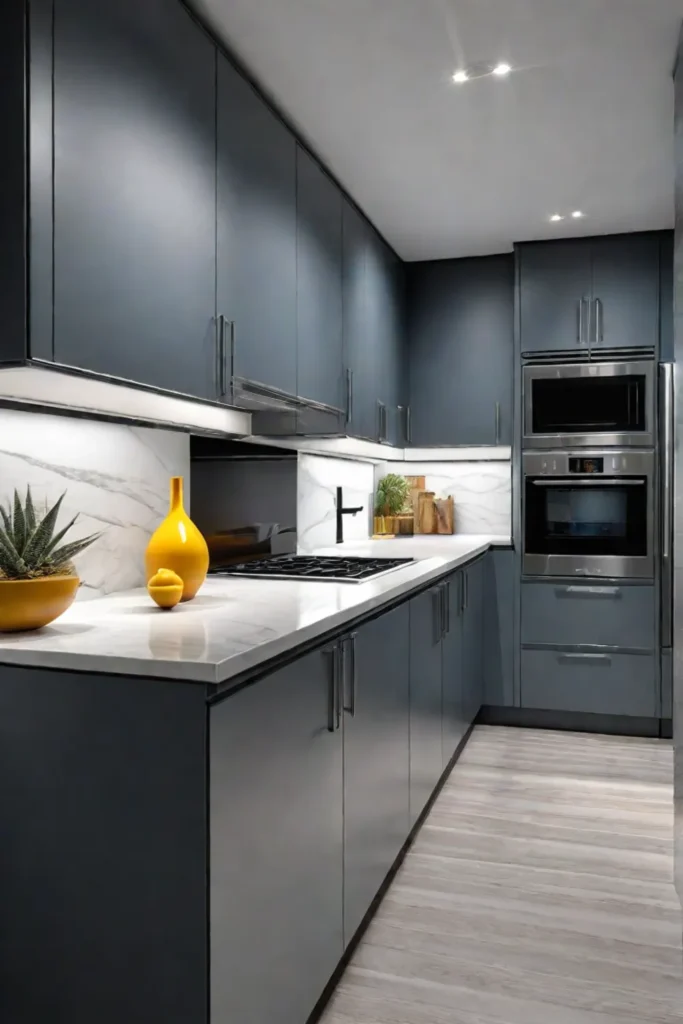
Some popular accent lighting sources include track, recessed, and cabinet lighting. Track lights, for example, can be positioned to highlight a specific area, such as a stunning tile backsplash or a row of open shelving. On the other hand, recessed lights can be used to accentuate architectural details or create a warm, inviting atmosphere in the kitchen.
When it comes to accent lighting, the key is to strike the right balance. You don’t want to overpower the space with too much drama, but you don’t want to leave it feeling flat and one-dimensional. The goal is to use accent lighting to complement the other lighting layers and enhance the kitchen’s overall design.
Natural Light
While artificial lighting is essential for creating a well-lit kitchen, nothing quite compares to the power of natural light. Incorporating natural light into your kitchen design can enhance the overall ambiance but also help reduce your reliance on artificial lighting, leading to energy savings and a more sustainable space.
Large windows, French doors, and skylights are all excellent ways to bring natural light into your kitchen. These design elements can create a sense of openness and brightness, making the space more inviting and spacious. Plus, exposure to natural light has improved mood, productivity, and overall well-being, making it a win-win for your kitchen and well-being.

Of course, placement and orientation are key when it comes to natural light. South-facing windows, for example, will receive the most sunlight throughout the day, while north-facing windows will provide a more consistent, diffused light. And don’t forget to consider the need for privacy and temperature regulation when incorporating natural light sources into your kitchen design.
By balancing natural light with the right artificial lighting solutions, you can create a functional and visually stunning kitchen with a healthy dose of sunshine to boot.
Layering Lighting
Now that we’ve explored the different types of lighting, it’s time to talk about how to layer them to create a harmonious and versatile kitchen. Effective lighting design often combines ambient, task, and accent lighting to perfectly balance functionality and aesthetics.
Imagine your kitchen as a symphony, with each lighting type playing a distinct role. The ambient lighting sets the tone, providing a warm and inviting glow. The task lighting then steps in, ensuring you can see clearly and work efficiently. And finally, the accent lighting adds the finishing touches, highlighting the unique features and design elements that make your kitchen special.
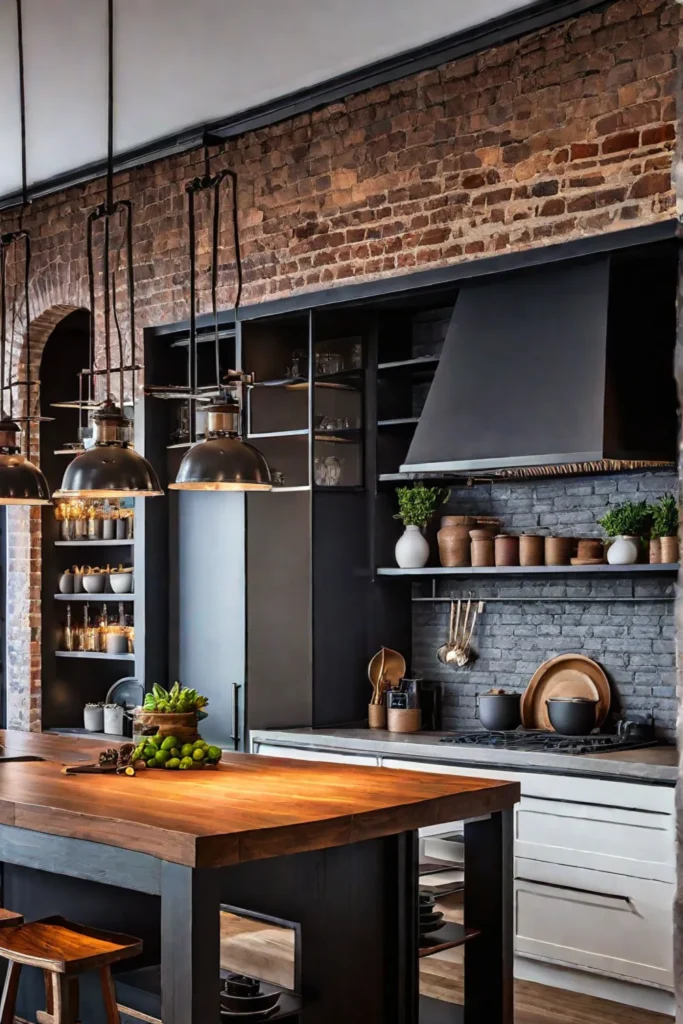
To create this layered effect, start with a base of recessed lights for ambient lighting, add under-cabinet lights for task lighting, and finish with track lights or cabinet lighting to accentuate specific areas. By carefully considering the placement and intensity of each lighting type, you can create a cohesive and visually appealing kitchen that caters to both form and function.
And the best part? With the rise of smart home technology, you can now take your layered lighting to the next level. Dimmable fixtures and programmable lighting scenes allow you to easily adjust the ambiance to suit your mood or the occasion, whether hosting a dinner party or cooking a cozy weeknight meal.
Enhancing with Lighting
Lighting is not just a functional element in kitchen design – it’s also a powerful tool for enhancing the overall aesthetics of the space. By strategically placing and selecting the right lighting fixtures, you can accentuate the unique features and design elements that make your kitchen special.
Take, for example, the humble countertop. With the help of under-cabinet lighting, you can showcase the texture and finish of the material, making it the star of the show. Or, if you have a stunning backsplash or a collection of decorative dishware, you can use track lighting or cabinet lighting to draw the eye to these focal points, creating a visually striking and cohesive design.
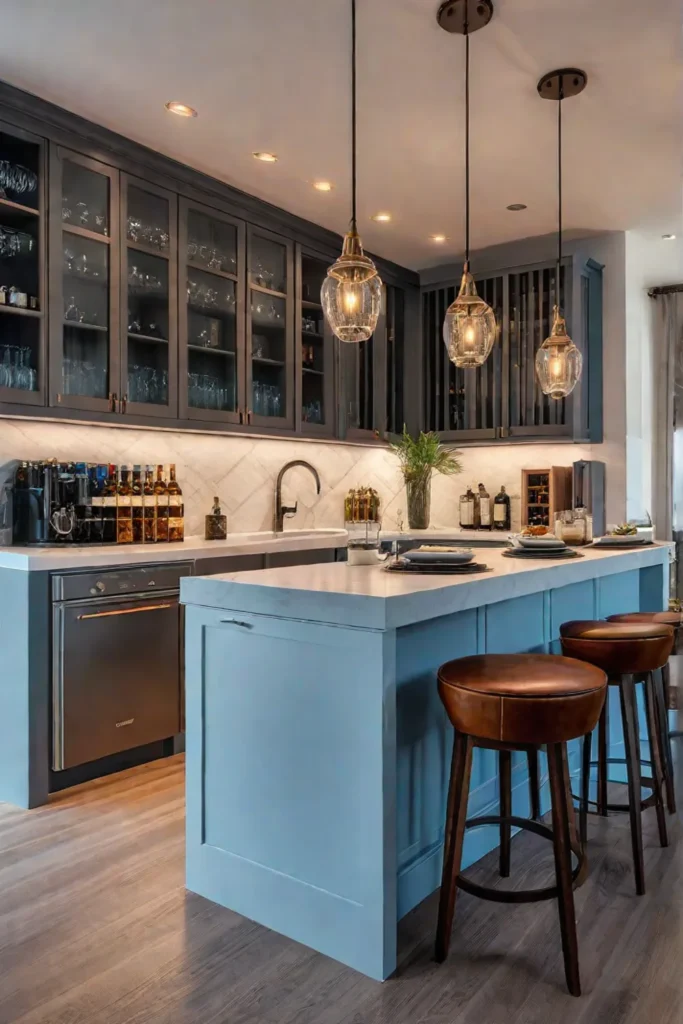
Lighting can also create a sense of depth and dimension in the kitchen. Strategically placed recessed lights or track lighting can highlight the contours of your cabinetry, making the space feel more open and inviting. By incorporating pendant lights over your kitchen island or dining area, you can define different zones within the room, creating a natural flow and visual interest.
Of course, when it comes to enhancing your kitchen design with lighting, it’s important to consider the overall style and aesthetic of the space. A modern, minimalist kitchen might benefit from sleek, low-profile fixtures, while ornate chandeliers or decorative wall sconces could elevate a more traditional space.
By understanding the power of lighting and how to use it to your advantage, you can transform your kitchen from a functional workspace into a true showpiece. This culinary haven delights the senses and inspires your inner chef.
Creating Ambiance through Lighting
As we’ve explored, lighting is not just about illumination – it’s also a powerful tool for setting the mood and atmosphere in your kitchen. By carefully selecting and positioning your lighting fixtures, you can create a warm and inviting ambiance that makes every meal and gathering feel like a special occasion.

Think about the difference between a kitchen bathed in the soft, cozy glow of pendant lights and one harshly lit by bright overhead fixtures. The former instantly evokes a sense of comfort and relaxation, while the latter can feel cold and uninviting. It’s all about finding the right balance and using lighting to your advantage.
One effective strategy is combining different lighting types to create a layered effect. For example, you might use pendant lights over your kitchen island to provide a warm, ambient glow, while under-cabinet lighting illuminates your countertops for task-oriented work. This blend of lighting not only enhances the space’s functionality but also sets the mood for everything from casual family dinners to elegant dinner parties.
And don’t forget the power of adjustable lighting controls. Dimmers allow you to fine-tune the ambiance, creating a cozy, intimate setting or a bright, energetic atmosphere. Smart home technology takes this one step further, enabling you to program lighting scenes and adjust the lighting with the touch of a button (or even a voice command!).

By considering the impact of lighting on ambiance, you can transform your kitchen into a true culinary haven. This space looks beautiful and feels warm, inviting, and perfectly suited to your lifestyle and entertaining needs.
Lighting Trends and Innovations
The world of kitchen lighting is constantly evolving, with new technologies and design trends emerging that can take your culinary haven to the next level. From smart lighting systems to energy-efficient LED options, the latest lighting innovations can enhance your kitchen’s functionality, sustainability, and overall aesthetic.
One of the most exciting trends in kitchen lighting is the rise of smart home technology. Smart lighting systems allow you to remotely control your kitchen lights, whether using a smartphone app or voice commands. Imagine being able to turn on the under-cabinet lights as you walk in the door or adjust the ambiance with a simple voice command as you set the table for dinner.
Another game-changing trend is the continued advancements in LED lighting. These energy-efficient bulbs last longer than traditional incandescent options and offer a wider range of color temperatures and dimming capabilities. This means you can create the perfect lighting scenario for any task or occasion, all while reducing your energy consumption and carbon footprint.
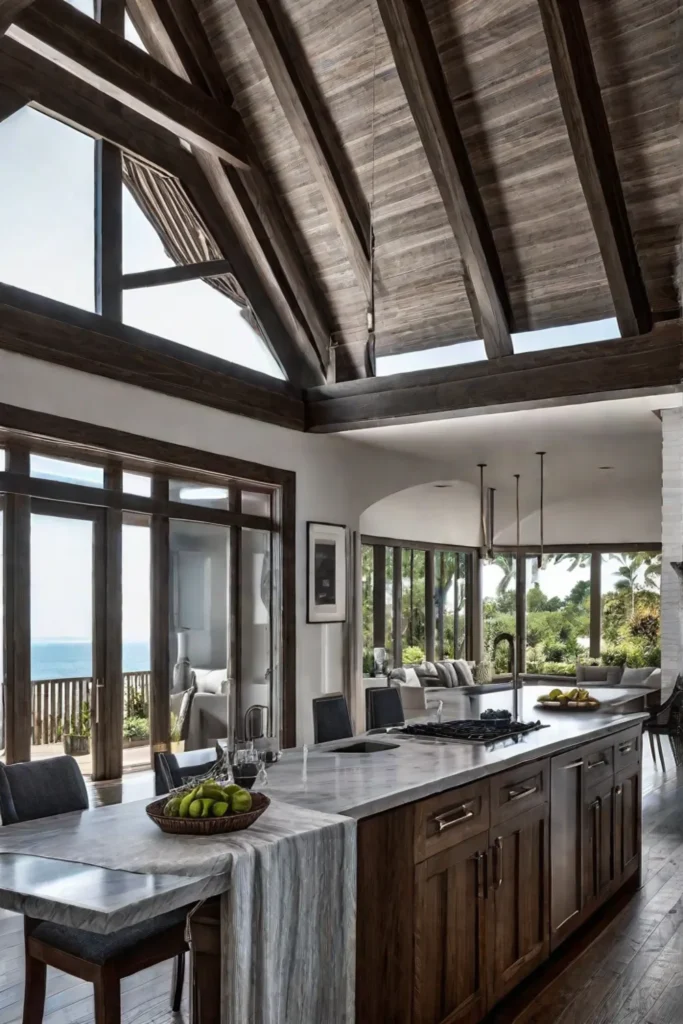
And let’s not forget about the power of natural light. Incorporating skylights, large windows, or even glass doors that open outdoors can transform your kitchen, flooding the space with natural brightness and creating a seamless connection between the indoor and outdoor environments. Not only does this enhance the overall ambiance, but it can also help reduce your reliance on artificial lighting, leading to significant energy savings.
As you plan your kitchen renovation or design, keep an eye out for the latest lighting trends and innovations. By incorporating these cutting-edge solutions, you can create a kitchen that is not only visually stunning but also highly functional, energy-efficient, and tailored to your unique lifestyle and preferences.
Conclusion
Lighting is the unsung hero of kitchen design, playing a crucial role in creating a functional, visually appealing, and inviting culinary haven. By understanding the different types of lighting – ambient, task, and accent – and how to layer them effectively, you can transform your kitchen into a space that truly inspires and delights.
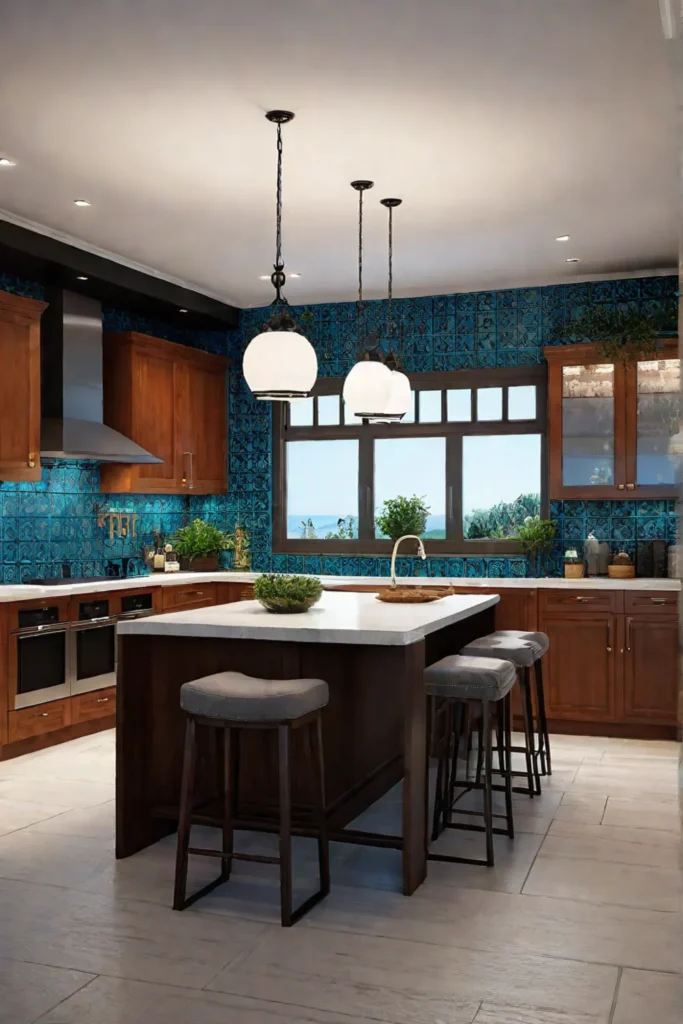
Whether you’re drawn to the warm, cozy glow of pendant lights or the crisp, focused beam of under-cabinet task lighting, the key is to create a balanced and harmonious lighting scheme that caters to both form and function. And by incorporating the latest lighting trends and innovations, such as smart home technology and energy-efficient LED options, you can elevate your kitchen design while reducing your environmental impact.
So, what are you waiting for? It’s time to illuminate your culinary dreams and create the kitchen of your desires. With the right lighting strategy, your kitchen will become the heart of your home—a space that not only looks beautiful but also makes cooking, entertaining, and everyday living an absolute joy.
